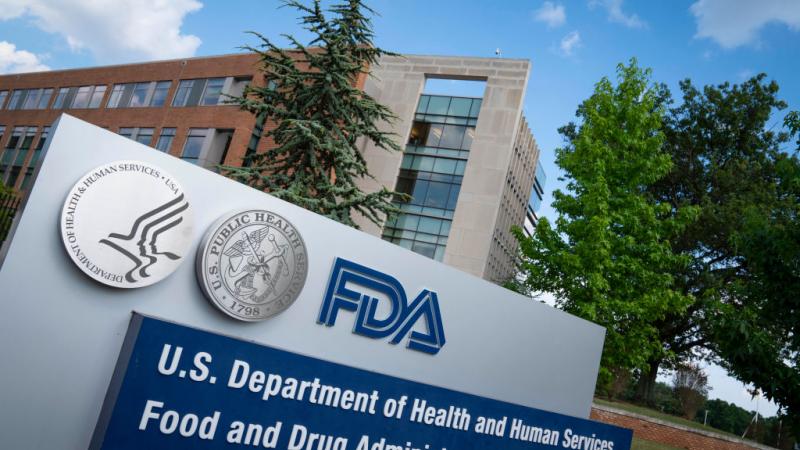After years of targeting fossil fuels, climate activists aim their lawfare at agriculture industry
“Such litigation shows promise for addressing gaps left by inadequate regulation and for holding major polluters accountable,” Yale researchers says.
A new legal analysis in the Columbia Journal of Environmental Law proposes filing lawsuits against America’s agriculture industry, following the same legal playbook climate activists are using against the oil industry.
To be sure, climate activists have for years targeted the agriculture industry, particularly methane emission from cattle and their manure.
The United Nations, in fact, has a program dedicated to educating people about how meat production is contributing to climate change.
In addition, the Environmental Protection Agency has a white paper, updated in February, titled, "Practices to Reduce Methane Emissions from Livestock Manure." And articles regularly appear in left-leaning media telling people that giving up meat is a way they do their part to stop what they say is a crisis.
But agriculture, at least until perhaps now, has largely been a secondary target for climate activists, who have set their sights more on the carbon emission of fossil-burning power and manufacturing plants and the estimated 250 million gas-powered automobiles now on U.S. roads.
Justin Tupper, president of the U.S. Cattlemen's Association, told Just The News that activists trying to demonize the cattle industry are a small but loud group. The attention they get, he said, is far larger than the number of people involved, and they are spreading misinformation about the industry.
“I think the facts are in our favor that we don’t contribute to climate change,” Tupper said.
Despite activists’ outcry, meat consumption in the U.S. has only increased. Rather than try to convince people to turn vegetarian or get legislators to clamp down on the livestock industry, activists are looking to the courts to achieve their goals.
Anti-fossil fuel activists have been launching dozens of lawsuits across the U.S. in an effort to force oil companies to pay billions of dollars for natural disasters they claim are caused or made worse from these companies.
The lawsuits are funded by anti-fossil fuel groups that want to hasten a transition away from the use of fossil fuels. As an activist with 350 Massachusetts explained in an opinion piece in 2022, the suits aim to accomplish with fossil fuels what was accomplished with tobacco. The settlements make companies raise the cost of their products, and in turn, people use less of them.
“Rulings against the fossil fuel industry could expedite the energy transition and help states become more climate-resilient,” activist Frederick Hewett wrote.
In a Yale-based analysis, Daina Bray, an animal advocate and clinical lecturer in Law at Ethics & Animals Program at Yale Law School, and co-author Thomas Poston, a third-year law student, argue that lawsuits against the cattle industry could create policies more favorable to their cause.
“Such litigation shows promise for addressing gaps left by inadequate regulation and for holding major polluters accountable,” the researchers explain.
The report points to the lawsuit filed by New York Attorney General Tetita James against a large meat packer as an example of legal strategies that can be used against the industry. The study also points to the success of Held v. Montana, which was a suit filed by young people in Montana, who were led by the anti-fossil fuel group Our Children’s Trust, against the state of Montana.
Citing EPA data, the study says that agriculture accounts for 10% of the U.S. greenhouse gas emissions. Livestock production was about 4.4% of total U.S. greenhouse gas emissions in 2021.
For comparison, transportation was 28% of total emissions, and electricity production was 25% of emissions.
Agriculture industry experts say this focus on a small quantity of emissions from livestock is misleading and ignores benefits.
Tupper said that cattle graze on grasses that aren’t digestible. This creates a high-protein food supply for human consumption that would otherwise have no nutritional value for the population. The land cattle graze on, he said, isn’t tillable, meaning it’s not suitable for crop production.
Brett Moline, director of public and government affairs for the Wyoming Farm Bureau, told Just The News that the environmental impact of 87 million cows in the U.S. lower than that of the unmanaged bison herds that roamed the Great Plains prior to the 1800s, which had a population of about 60 million.
“Over the last 100 years, we’ve really figured out how to manage livestock to improve the range,” Moline explained.
The cows fertilize the soil on which the grasses grow, Moline said. Their hooves break up the soil, which further facilitates the growth of plants the cows graze on, and this process, he said, sequesters carbon by encouraging plant growth.
Moline said that cattle ranchers are doing alright financially, with cattle prices at historic highs. However, when costs of fertilizer and diesel rise, it can hit their bottom line. A wave of lawsuits would shave their margins thinner, or possibly erase them entirely.
For the Yale researchers, the strategy looks promising.
“If legislators and executive agencies continue to fail to regulate animal agriculture emissions to any meaningful extent … effective climate governance may fall to these litigants and the courts before which they bring their claims,” Bray and Poston write.
The Facts Inside Our Reporter's Notebook
Links
- United Nations has a program
- articles regularly appear
- left-leaning media
- giving up meat
- new legal analysis in the Columbia Journal of Environmental Law
- U.S. Cattlemen's Association
- has only increased
- launching dozens of lawsuits
- lawsuits are funded by anti-fossil fuel groups
- 350 Massachusetts
- opinion piece in 2022
- lawsuit filed by New York Attorney General Tetita James
- suit filed by young people in Montana
- Our Childrenâs Trust
- 4.4% of total U.S. greenhouse gas emissions
- For comparison
- 87 million cows
- population of about 60 million













